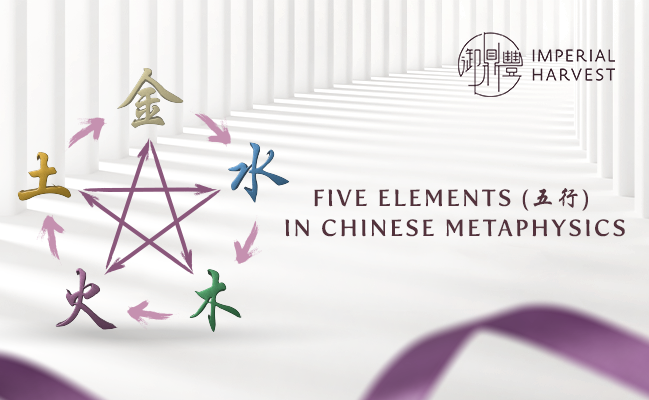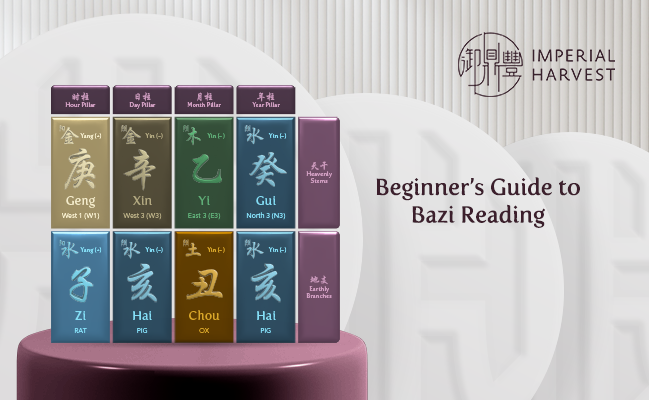

Posted by Imperial Harvest on 20 December 2024
Understanding Your Daymaster (日主)
Estimated Reading Time: 5 mins
In the intricate study of Chinese metaphysics, the concept of the Daymaster (日主) serves as the foundation for analysing an individual’s personality, characteristics, and intrinsic traits.
The Daymaster acts as an outward reflection of the self, offering insights into a person’s nature and tendencies. Determined by the Heavenly Stem of the day of birth in a person’s Bazi (八字) chart, it is a cornerstone of Chinese metaphysical analysis.
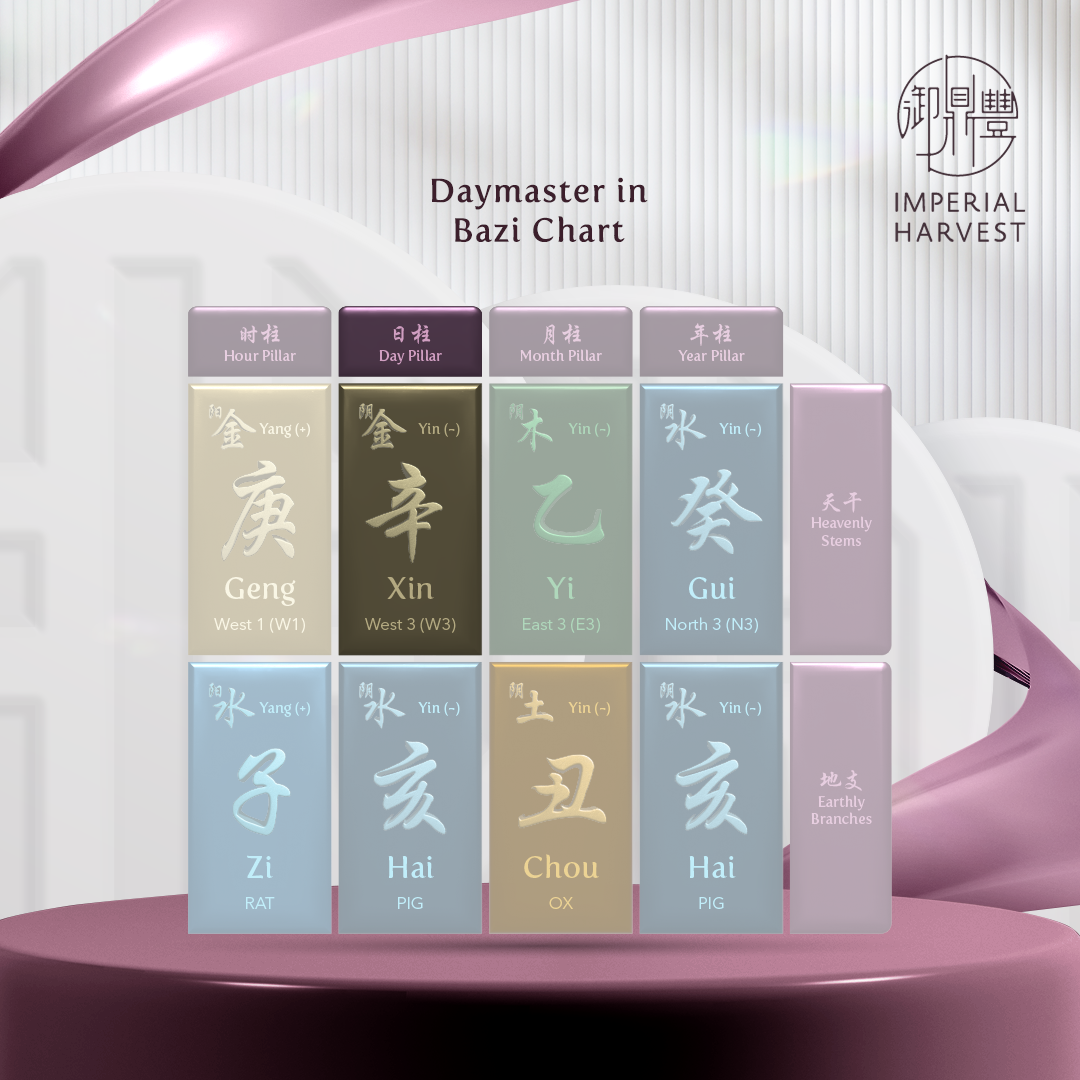
What is a Daymaster (日主)?
The Daymaster, also known as the Day Pillar, is the focal point of the Bazi chart, representing an individual’s fundamental identity. As the most critical element in the chart, it serves as a mirror of one’s personality, traits, innate strengths, and vulnerabilities.
Through its dynamic interactions with the Year, Month, and Hour pillars, the Daymaster reveals valuable insights into a person’s character and potential, shaping their destiny and life path.
In Chinese metaphysics, Daymasters refer to the Heavenly Day Stem which represents the day of an individual’s birth. There are a total of Ten Daymasters, which are also referred to as the Ten Heavenly Stems: Jia Wood (甲木), Yi Wood (乙木), Bing Fire (丙火), Ding Fire (丁火), Wu Earth (戊土), Ji Earth (己土), Geng Metal (庚金), Xin Metal (辛金), Ren Water (壬水) and Gui Water (癸水).
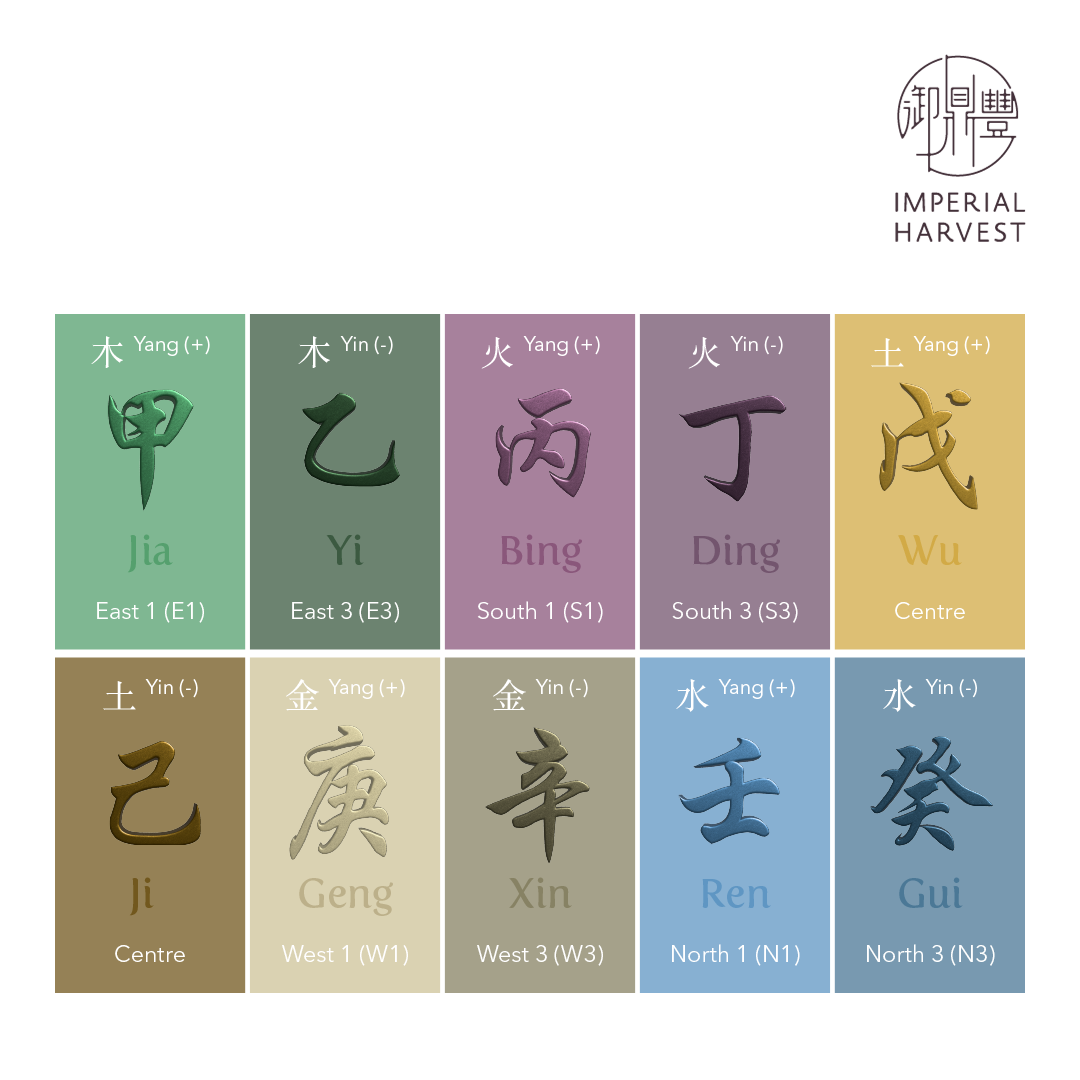
Why is Understanding Your Daymaster (日主) Essential?
In Bazi, the Daymaster plays a pivotal role in uncovering an individual’s innate potential, strengths, and areas for growth. By gaining a deeper understanding of your Bazi chart and Daymaster, you can position yourself to achieve your goals, foster self-improvement, and attract greater opportunities.
The insights provided by your Daymaster offer benefits such as:
- Self-Awareness: Discover your intrinsic qualities, natural inclinations, and behavioural patterns. This awareness helps you understand both your strengths and areas for improvement.
- Relationship Dynamics: Gain clarity on your compatibility with others, enhancing your ability to effectively navigate personal and professional relationships.
- Career Alignment: Leverage insights into your Daymaster to make career choices that resonate with your natural talents and areas of expertise.
- Personal Growth: Use the knowledge of your strengths and weaknesses to build on your positive traits while addressing areas that require development.
Understanding your Daymaster empowers you to lead a more informed and purposeful life.
What Does It Mean to Have a Weak or Strong Day Master?
In the foundational study of Bazi, assessing the strength of the Daymaster is essential for determining favourable elements. In advanced studies, practitioners employ more sophisticated and precise methods, such as Bridging the Conflicting Elements, Temperature Adjustment, and Treating the Sickness, to identify the most favourable elements.
What are Luck Pillars in Bazi?
In Bazi (Four Pillars of Destiny), Luck Pillars represent the external influences and opportunities that shape a person’s life journey. They are often likened to the road one travels on, providing direction, terrain, and context for the journey.
The natal chart determines the individual’s core characteristics and potential, much like a car’s design and features dictate its performance. However, the Luck Pillars introduce external variables—the conditions of the road—such as smooth highways, challenging terrain, or unexpected obstacles. These factors influence how easily or effectively the car (natal chart) can navigate life’s journey.
Luck Pillars consist of 10-year cycles that reveal the influence of Heavenly Stems and Earthly Branches during specific phases of life. These cycles can bring prosperity, challenges, or transformations, depending on how they interact with the elements and structure of the natal chart. Understanding the interplay between the Luck Pillars and the natal chart allows individuals to make informed decisions, optimize opportunities, and mitigate challenges during different stages of life.
In essence, the Luck Pillars provide context and timing for the dynamic forces shaping one’s destiny, complementing the intrinsic qualities defined by the natal chart. Together, they form a comprehensive framework for understanding and navigating life’s path.
Understanding Your Daymaster
Each Daymaster (日主) possesses unique characteristics and strengths, shaped by its connection to the Five Elements: Wood (木), Fire (火), Earth (土), Metal (金), and Water (水). These elements are key to understanding the dynamics of the Bazi chart and the interactions that influence an individual’s personality and life path.
- Wood (木): Jia (甲) and Yi (乙)
- Fire (火): Bing (丙) and Ding (丁)
- Earth (土): Wu (戊) and Ji (己)
- Metal (金): Geng (庚) and Xin (辛)
- Water (水): Ren (壬) and Gui (癸)
Each of these elements represents distinct qualities and traits, which interact within the Bazi chart to shape a person’s identity, strengths, and potential.
Yin and Yang: The Polarities of the Daymaster
A critical aspect of understanding your Daymaster lies in the differentiation between each element’s Yin and Yang polarities. These complementary forces add depth to the interpretation of a Daymaster, as each element expresses distinct characteristics depending on its polarity.
The Yin and Yang polarities are determined by the Heavenly Stem associated with an individual’s day of birth and can be categorised as follows:
- Yang (Odd-Numbered Heavenly Stems): Representing masculine energy, assertiveness, and active qualities: 甲 (Jia), 丙 (Bing), 戊 (Wu), 庚 (Geng), and 壬 (Ren).
- Yin (Even-Numbered Heavenly Stems): Representing feminine energy, receptivity, and passive qualities: 乙 (Yi), 丁 (Ding), 己 (Ji), 辛 (Xin), and 癸 (Gui).
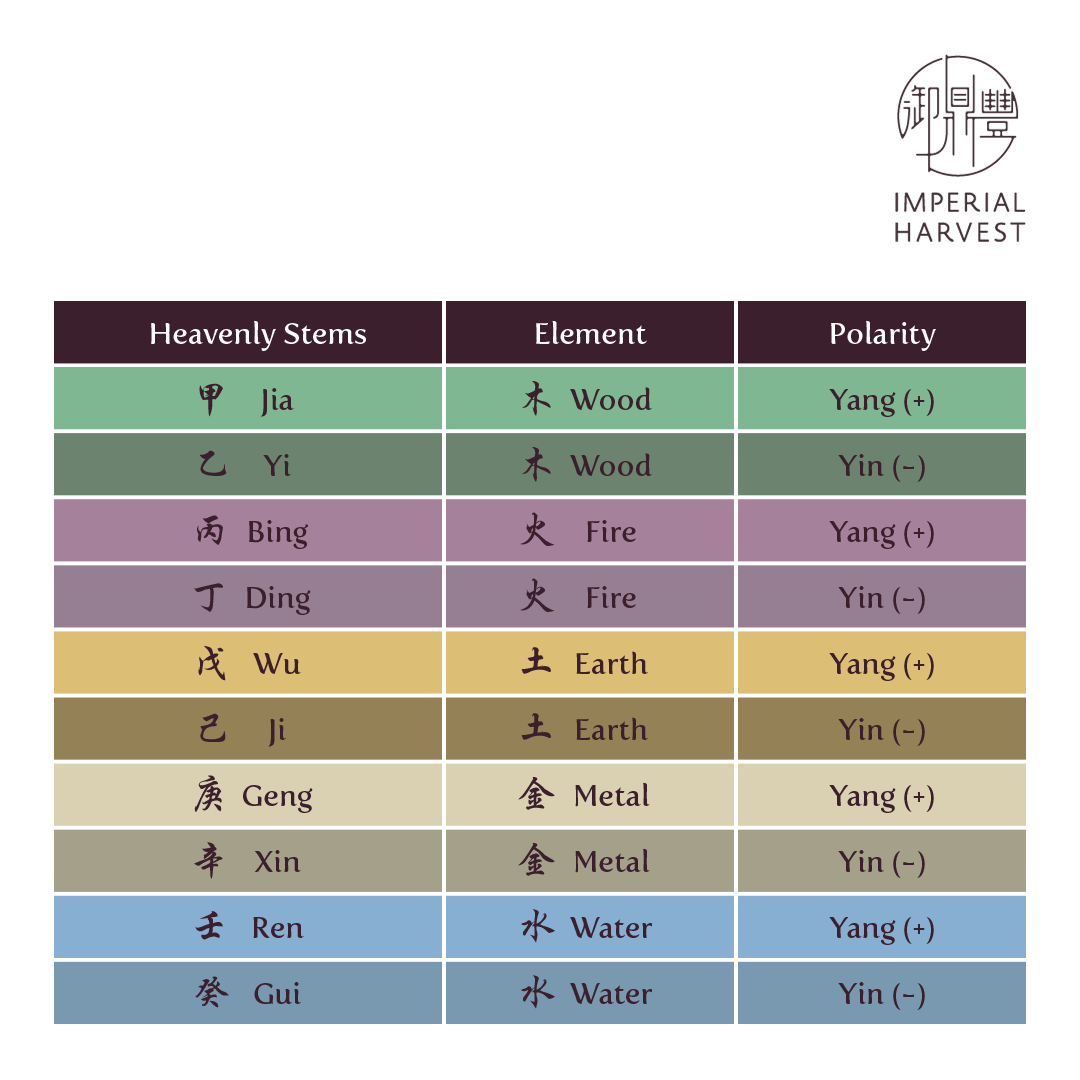
| Heavenly Stems | Element | Polarity |
|---|---|---|
| 甲 (jiǎ) | Wood | Yang |
| 乙 (yǐ) | Wood | Yin |
| 丙 (bǐng) | Fire | Yang |
| 丁 (dīng) | Fire | Yin |
| 戊 (wù) | Earth | Yang |
| 己 (jǐ) | Earth | Yin |
| 庚 (gēng) | Metal | Yang |
| 辛 (xīn) | Metal | Yin |
| 壬 (rén) | Water | Yang |
| 癸 (guǐ) | Water | Yin |
The dynamic relationship between Yin and Yang polarities and their associated elements adds layers of complexity to the Daymaster’s interpretation. This interplay, combined with the elemental associations of the Heavenly Stems, offers profound insights into an individual’s character, strengths, weaknesses, and life potential. By examining these connections, one can uncover a deeper understanding of their innate qualities and life path.
Discover the Power of Your Daymaster with Imperial Harvest
Understanding your Daymaster is the key to unlocking your full potential, helping you identify your unique strengths and address areas for growth. By gaining clarity on your innate qualities, you can make informed decisions, enhance personal and professional relationships, and align your efforts with your life’s purpose.

At Imperial Harvest, Master David offers personalised Bazi consultations that empower you to uncover the hidden dynamics of your Daymaster. These insights give you the tools to overcome challenges, maximise opportunities, and chart a path towards success, harmony, and lasting prosperity.
Learn about your Daymaster:
- Jia Wood (甲木)
- Yi Wood (乙木)
- Bing Fire (丙火)
- Ding Fire (丁火)
- Wu Earth (戊土)
- Ji Earth (己土)
- Geng Metal (庚金)
- Xin Metal (辛金)
- Ren Water (壬水)
- Gui Water (癸水)
Imperial Harvest’s expert consultants are always on hand to guide you on your journey and provide you with insights to help you realise your fullest potential. Book a complimentary consultation today or contact us at +65 92301640.
We are located at
For prospective clients:Imperial Harvest402 Orchard Road
Delfi Orchard #02-07/08
Singapore 238876 For existing clients:Imperial Harvest Prestige
402 Orchard Road
Delfi Orchard #03-24/25
Singapore 238876
Most Read Articles
Get to read our life changing articles and get inspired.
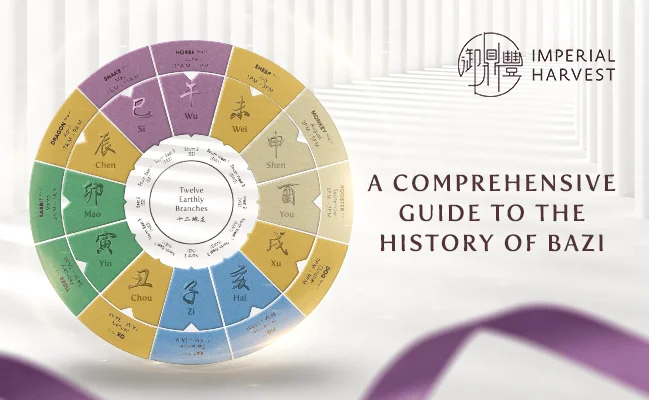
A Comprehensive Guide to the History of Bazi (八字)
Estimated Reading Time: 5 mins Bazi (八字) is often mistakenly assumed as the Chinese counterpart of western Astrology. The similarities between both systems lie in their utilisation of birth dates and time in their calculations, and the ability to be read from a tabulated chart. Where Astrology may take into account the positions of different […]

Imperial Harvest Consecration Ceremony
Estimated Reading Time: 5 mins At Imperial Harvest, each earthly treasure undergoes a series of consecration rites performed by Master David, before it is bestowed upon its blessed owner. Every aspect of these sacred Chinese anointing rituals is carefully examined and accurately represented in Master David’s blessings, reflecting Imperial Harvest’s deep respect for these esteemed […]
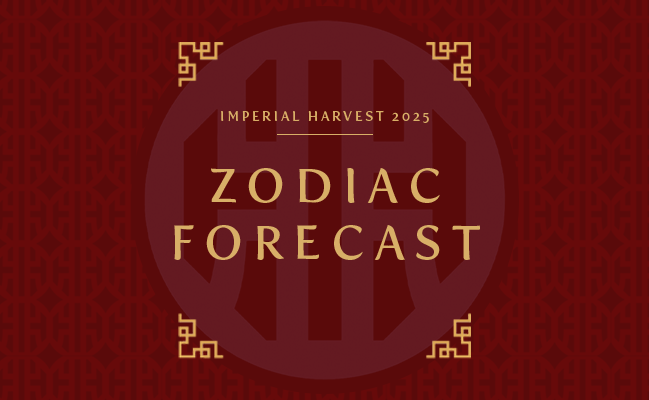
Imperial Harvest 2025 Zodiac Forecast
Estimated Reading Time: 7 mins The Year of the Wood Snake in 2025 brings a dynamic period of growth, transformation, and new beginnings. With its ambitious qualities, the Wood Snake’s influence offers unique opportunities for those who seek progress and renewal. Drawing from the time-honoured principles of Imperial Feng Shui, the Imperial Harvest 2025 Zodiac […]
